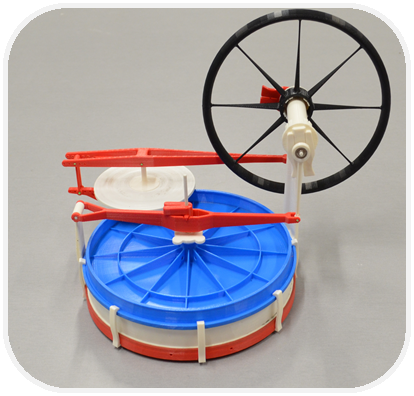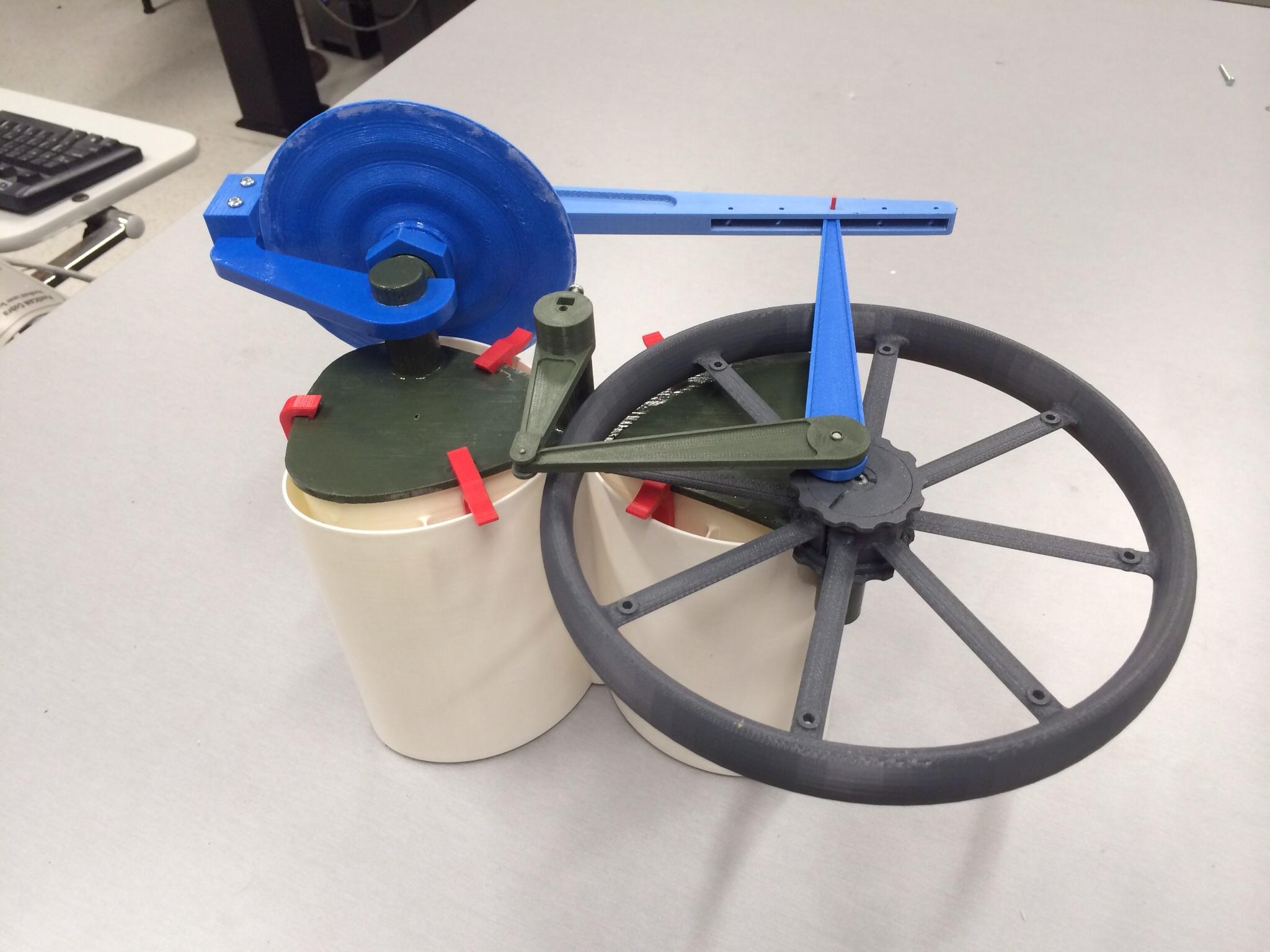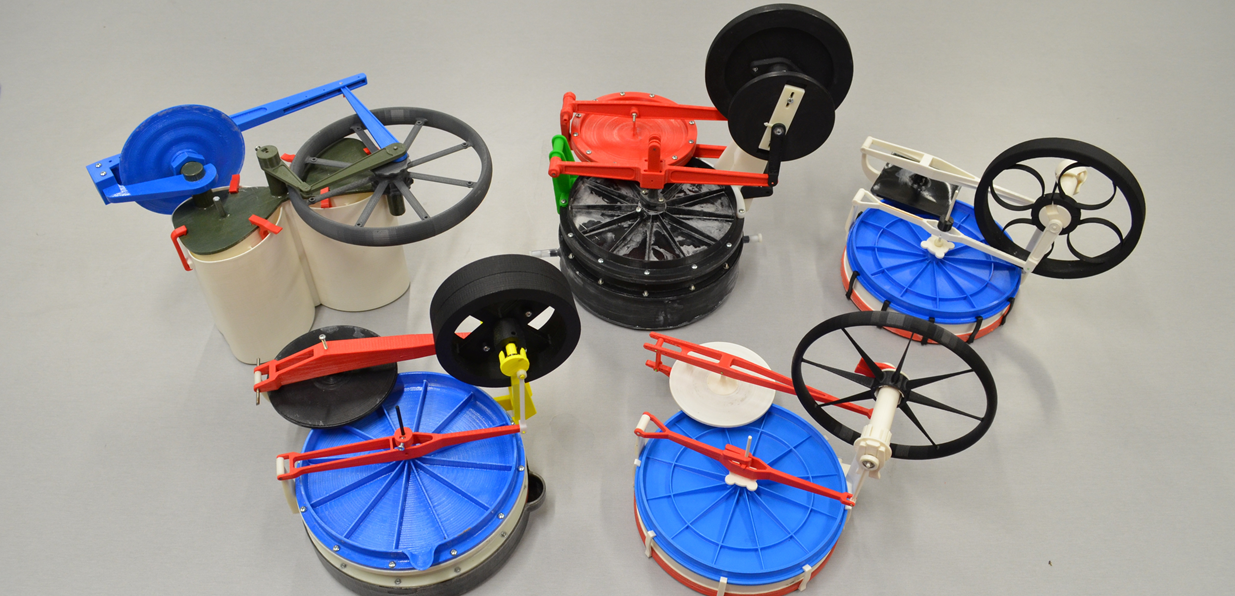Fully 3D Printed Working Engine Runs Completely on Hot and Cold Water — and You Can Print Your Own For Free
 3D printing is fascinating, especially to those individuals who have not ever seen the technology in action previously. However, like with all new technology, this fascination subsides as time goes on and the technology becomes more commonplace. Perhaps we aren’t quite at this point yet with 3D printing, but the intrigue generated through the seeing, touching, and feeling of 3D printed objects will surely wither with time. One man in New Zealand, named Don Clucas, realizes this, and with the help of the University of Canterbury, he has come up with a way to fascinate even those already acclimated to 3D printing technology.
3D printing is fascinating, especially to those individuals who have not ever seen the technology in action previously. However, like with all new technology, this fascination subsides as time goes on and the technology becomes more commonplace. Perhaps we aren’t quite at this point yet with 3D printing, but the intrigue generated through the seeing, touching, and feeling of 3D printed objects will surely wither with time. One man in New Zealand, named Don Clucas, realizes this, and with the help of the University of Canterbury, he has come up with a way to fascinate even those already acclimated to 3D printing technology.
In a project that could be considered “breathtaking,” “innovative,” and “potentially revolutionary,” Clucas has created what he believes is the first ever fully 3D printed working engine. Better yet, it runs on thermodynamics, meaning all it requires for fuel is simple tap water.
“What I’m doing is creating projects for people to print, rather than objects,” explained Clucas to 3DPrint.com. “A few years ago, 3D printing was new [and] people were wowed by items that could be made. Now with wide distribution of low cost machines it has become less spectacular. I have observed the attention span of visitors to our 3D lab, looking at printed parts. [Viewing of] static objects are generally several to tens of seconds. Watching the printer running can be up to a minute, but watching and explaining these engines can be minutes. People like seeing dynamic things.”
These Stirling cycle engines are certainly dynamic, and without a doubt have the ability to keep anyone’s attention for more than a few seconds. For those unfamiliar with how Stirling cycle engines operate, they run off of heated and cooled air or other gases. The heated and then cooled gases cause a pressure change, which in turn push and pull on the engine’s piston. To run these engines, all it takes is a bowl of hot water underneath, some ice water on top, and a small flick of the flywheel to get it started. Once complete, the engine will begin running using the hot and cold water as a way to control the air pressure.
 Clucas has created all of the design files and has made them available on his website, along with instructions on assembling these engines.
Clucas has created all of the design files and has made them available on his website, along with instructions on assembling these engines.
“There are many things that you can do with these engines,” explained Clucas. “You can use them for yourself, or they can be used as educational instruments. For example, at a high school you could make the machines, and demonstrate them to the students to show them basic thermodynamics. If you got them in universities, you can have labs set up so that the students can actually run them, do tests on them, do examinations, and do development and optimization of the machines.”
The way in which these engines are designed means that the variables in how the engine operates can be modified. Many different setups can be created, as well as different methods of operation. The stroke of the engines may be changed, as can the phase angle of the pistons, allowing for complete customization.
As for Clucas, he isn’t stopping here. He is constantly working to bring new 3D printable projects to those interested in this technology. “I want to develop projects for people with a printer and little or no access to a tool shop or special technical abilities,” he tells us. “There are many published projects that are great but require special extra bits, machined parts or electronics. These projects are particularly suited to education.”
Could this lead to innovation among engine design? If just about anyone can now 3D print their own working engines, this means greater access and ability to experiment with the engineering and mechanics of this technology. What do you think? Have you printed your own Stirling cycle engine? Discuss in the 3D Printed Stirling Engine forum thread on 3DPB.com. Check out the video below, showing Clucas explaining these engines more in depth.
Subscribe to Our Email Newsletter
Stay up-to-date on all the latest news from the 3D printing industry and receive information and offers from third party vendors.
Print Services
You May Also Like
New Business: Temporary, Migratory, & Modular 3D Printed Architecture
If we look at potentially emerging 3D printing businesses, then architecture has not been fully explored. Yes, there is a lot of house 3D printing going on worldwide. From deployable...
3D Printing News Briefs, April 19, 2025: Material Extrusion Standard, Metal Powder, & More
In today’s 3D Printing News Briefs, we’re covering a proposed standard for material extrusion, before moving on to business and metal powder. We’ll end with a commercial store’s robotic 3D...
Japan Unveils World’s First 3D Printed Train Station
Japan is now home to what we believe is the world’s first train station built with 3D printing technology. Located in Arida City, just south of Osaka, the new Hatsushima...
restor3d Raises $38M to Expand 3D Printed Orthopedic Implants
Backed by $38 million in new funding, restor3d is pushing ahead with the launch of four personalized implant lines, set to roll out in 2025 and 2026. This latest venture...


























